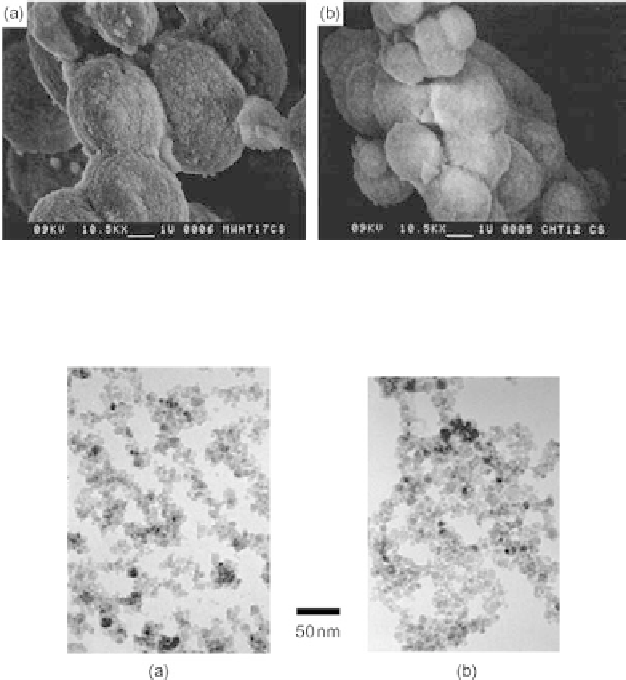Geoscience Reference
In-Depth Information
Figure 10.84 SEM photographs of CsAl
2
PO
6
[392]
.
Source: Courtesy of S. Komameni.
Figure 10.85 TEM images: (a) Co
1
2
x
Zn
x
Fe
2
O
4
and (b) Ni
1
2
x
Zn
x
Fe
2
O
4
nanoparticles
obtained using microwave-hydrothermal method
[395]
.
hydrothermal conditions is expected to lead to savings in energy and the cost of pro-
duction of these materials.
A majority of the experiments on microwave-hydrothermal processing are done
using a commercially available microwave digestion system, MDS-2000, which is
designed by the CEM Corporation, USA. This system produces a microwave fre-
quency of 2.45 GHz and the maximum pressure is
200 psi.
Komarneni et al.
[391]
have carried out the synthesis of BaTiO
3
,SrTiO
3
,
Ba
0.5
Sr
0.5
TiO
3
,BaZrO
3
,SrZrO
3
, PbZrO
3
,andPb(Zr
0.5
2Ti
0.48
)O
3
, using both conven-
tional and microwave-hydrothermal techniques. Conventional-hydrothermal proces-
sing, using TiO
2
B
xH
2
O gel and Sr(OH)
2
, usually yields platy, needles, or irregular or
subrounded agglomerated particles. However, microwave-hydrothermal processing
yields agglomerate-free, narrow particle size (0.1
μ
m) distribution with spherical
morphology, which is expected to have better sintering properties.
Tables 10.9 and
10.10
give X-ray diffraction (XRD) analysis of BaTiO
3
,SrTiO
3
,Ba
05
Sr
05
TiO
3
,
0.2


